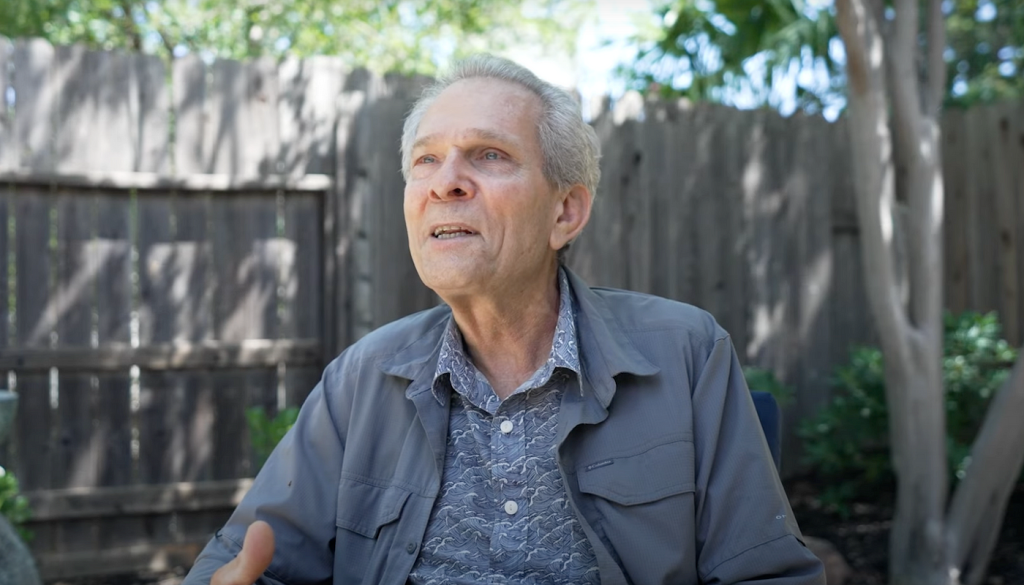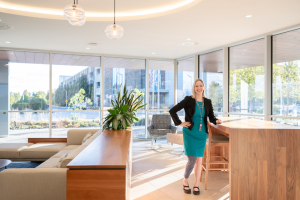Every year, nearly 800K people in the United States have a stroke. If you or a loved one survived a stroke, the road to recovery might seem challenging. A stroke can impact your physical, emotional, and psychological well-being in life-altering ways. But with the right rehabilitation plan and support system, life after stroke can still be fulfilling. Lee’s story is just one example of the hope that lies ahead.
Lee: stroke survivor, musician, veteran, and tech enthusiast
Meet Lee. He is a stroke survivor, musician, veteran, and tech enthusiast who lives in California. 33 years ago, Lee suffered from a bilateral brain stem stroke, which left him in the hospital for 10 weeks. He lost the use of his left side, was on a ventilator for a week, had to eat through a feeding tube, and was sent home in a wheelchair. Still, he didn’t realize how bad it was at the time — that even with rehab, he wouldn’t be able to do many of the things he used to do.
Before his stroke, Lee worked in the world of startups in Silicon Valley. As a dedicated sales rep working to bring people’s ideas to life, he traveled internationally frequently. He found work-life balance and enjoyment in the acoustic guitar. But after his stroke, he lost the ability to use his left hand and could no longer play guitar. “I went into a pretty dark space because of that.”
For the next twenty years, Lee didn’t play any musical instruments. Then, he discovered the Didgeridoo, a wind instrument that doesn’t require the use of the left hand. The didgeridoo is played by utilizing a special breathing technique called circular breathing, which also helped Lee with some right-side facial asymmetry that was a result of his stroke.
Playing the didgeridoo and rediscovering music “is a big part of who I am today,” says Lee.
Adapting to changes: embracing a new normal for life after stroke
After discovering the didgeridoo, Lee started embracing other hobbies. He gardens regularly, practices tai chi, pursues creative projects, and — perhaps most importantly — practices gratitude and being present. In doing so, it’s helped him accept that he can be happy with where he’s at today. That he doesn’t have to try to be everything that he was before his stroke. That he can still be a better version of himself today.
Discovering new technology to aid in stroke rehabilitation
Every day, Lee wakes up and reads The Good News Network, a national newspaper that publishes positive news stories. One morning, he came across an article about the Cionic Neural Sleeve, bionic clothing that combines the diagnostic power of a gait lab with the therapeutic power of functional electrical stimulation, and looks like an athletic legging, not a mobility device.
Initially, Lee thought that he was too far post-stroke to benefit from the technology. However, he was quickly reminded of an experimental research trial he participated in in 1991 that administered static electrical stimulation and biofeedback to measure muscle movement. He recalls the researcher saying, “Someday, we’re going to have the technology to use electricity to help you walk.”
Though Lee was skeptical, his wife, Paula, encouraged him to look into it. He met with his doctor who was excited about the innovative technology and filled a prescription. Shortly after receiving the sleeve, Lee walked an hour around Costco — something that previously would have been extremely tiresome and challenging for him. “It’s really empowering,” he says.
Regaining mobility with the Cionic Neural Sleeve
With the added help of the Cionic Neural Sleeve, Lee is able to park further away while shopping, walk with improved posture, find more joy in gardening, and feel more confident navigating over uneven terrain. He says these might feel like small things to other people, but to him, they’re huge.
“Hope. That’s what this is about for me. I’m not hoping to go climb a mountain. I’m hoping to be safe. I’m hoping not to be a burden. I’m hoping to be able to tap my toe when I play the didgeridoo. I’m really just so excited about this.”
Thank you, Lee, for sharing your story of life after a stroke!

About CIONIC:
CIONIC is a bionic clothing company on a mission to superpower mobility for individuals with disabilities. The Cionic Neural Sleeve is an FDA-cleared clothing garment indicated to:
- Improve walking
- Increase strength and range of motion
- Facilitate muscle re-education
It is indicated for individuals with upper motor neuron disorders, including multiple sclerosis, stroke, cerebral palsy, incomplete spinal cord injuries, traumatic brain injuries, and more. Take the assessment to see if it’s a fit for you.

Individual results may vary, and the Neural Sleeve is designed to improve gait and strength for individuals with upper motor neuron diagnoses. Consult your doctor on medical decisions.





